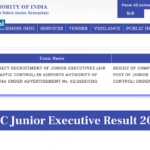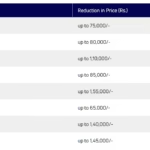Hyundai is gearing up to expand its compact SUV offerings in India with a promising new entrant based on the globally successful Bayon. Internally codenamed Bc4i, this new crossover is expected to hit Indian roads by 2026. Based on the same platform as the latest i20, this model will strategically position itself between the Venue and Creta, aiming to appeal to buyers seeking a stylish, tech-forward, and affordable SUV.
🚗 What to Expect from the Bayon-Based SUV in India
1. Compact Yet Spacious Design
Tailored for Indian conditions, the Bayon-based SUV will fall just under the 4-metre mark, taking advantage of India’s small car tax benefits. Measuring approximately 4.18 metres in length, 1.77 metres in width, and 1.49 metres in height, the vehicle is expected to offer a balanced mix of urban maneuverability and road presence.
2. Stylish European-Inspired Looks
Drawing heavily from the refreshed 2025 Bayon, this upcoming SUV will sport a sleek and sporty appearance. Key exterior features will likely include:
- A full-width LED DRL bar at the front
- Split headlamp setup with arrow-shaped lights
- Coupe-inspired sloping roofline and sharp C-pillar
- Alloy wheels ranging between 16 to 17 inches
- Faux skid plates and roof rails for a rugged appeal
This styling brings together hatchback agility and SUV aggression, creating a unique profile that stands out in traffic.
3. A Feature-Rich Interior
The cabin design is expected to borrow heavily from the i20 and Bayon, offering a clean yet tech-savvy layout. Anticipated features include:
- Twin 10.25-inch digital displays (instrument cluster and infotainment)
- Wireless Apple CarPlay and Android Auto
- Bluelink connected car tech with OTA updates
- Automatic climate control and ambient lighting
- Multiple USB-C charging ports
The dashboard will likely carry a minimalist, all-black theme, enhancing the modern premium appeal of the cabin.
4. Advanced Safety and ADAS Features
Safety remains a top priority, and this SUV is expected to offer Hyundai’s SmartSense suite of driver-assistance features. These may include:
- Lane Keep Assist and Lane Follow Assist
- Forward Collision Warning with Auto Emergency Braking
- Blind Spot Monitoring
- Smart Cruise Control with stop-and-go functionality
- Driver attention alert system and e-Call emergency function
The inclusion of ADAS features could give it an edge over similarly priced rivals.
5. Proven Petrol Powertrains
The upcoming SUV is likely to share its engine options with the i20 and Venue. These may include:
- 1.2-litre naturally aspirated petrol engine producing around 84 PS
- 1.0-litre turbocharged petrol engine generating about 100–120 PS
Transmission options will include a 6-speed manual, a 6-speed iMT (clutchless manual), and a 7-speed dual-clutch automatic (DCT) for the turbo variants. A 48V mild-hybrid variant is unlikely for India at launch but may be introduced later, depending on market demand.
6. Value Through Shared Platform and Local Production
Hyundai will most likely manufacture the Bayon-based SUV at its existing plants in either Talegaon, Maharashtra or Sriperumbudur, Tamil Nadu. This allows the automaker to leverage economies of scale using the i20’s K2 platform. By reusing components and assembly lines, Hyundai can price the SUV competitively between ₹10 lakh to ₹15 lakh, depending on the variant.
🔮 Why Hyundai’s New SUV Is a Big Deal for India
Direct Rival to the Fronx, Nexon & Others
The new model is designed to rival the likes of Maruti Suzuki Fronx, Tata Nexon, Toyota Taisor, and Citroën C3. These compact SUVs have carved a dominant space in the ₹10–15 lakh range, and Hyundai aims to tap into this high-growth segment with a fresh offering.
Complements Hyundai’s SUV Strategy
Hyundai is clearly pushing to strengthen its SUV portfolio in India. The introduction of this Bayon-based SUV aligns with its strategy of catering to the youth and urban population with feature-loaded, tech-rich, compact SUVs that don’t break the bank.
Efficient Engineering with the K2 Platform
The SUV will be based on Hyundai’s versatile K2 platform, which underpins models like the i20, Venue, and even the Creta. This shared architecture ensures reduced production costs, robust quality, and ease of maintenance for Indian customers.
🗓 Launch Timeline & Production Expectations
The launch is expected around fiscal year 2026 or early 2027. Production is anticipated to start in late 2025, with an initial annual target of around 100,000 units. This not only boosts Hyundai’s SUV volumes but also prepares the brand for a broader IPO strategy by showcasing its commitment to expanding its domestic footprint.
💰 Expected Pricing and Variant Strategy
Hyundai is expected to price this SUV smartly to undercut rivals and attract price-conscious buyers. Anticipated ex-showroom prices range from ₹10 lakh for the base model to around ₹15 lakh for the fully-loaded top variant.
Likely Variants:
- Base: Manual transmission, basic infotainment, safety essentials
- Mid: Touchscreen infotainment, advanced connectivity, some ADAS features
- Top: Dual digital displays, DCT gearbox, full SmartSense ADAS suite
This trim structure will allow buyers to choose according to their tech and performance preferences.
⚖️ Strengths and Limitations
✅ Pros:
- Compact and stylish design ideal for Indian cities
- Advanced features including dual digital displays and ADAS
- Hyundai reliability and strong service network
- Cost-efficient platform ensures value-for-money
⚠️ Cons:
- No hybrid or CNG variant at launch
- Ride quality may be on the firmer side based on global Bayon reviews
- Will face stiff competition from established players like Nexon and Fronx
🔍 Hyundai Bayon vs. Key Rivals: Fronx and Nexon
Design Comparison
Hyundai brings sleek, modern styling with LED lighting and a coupe-like profile. Fronx, derived from the Baleno, features youthful curves, while the Nexon emphasizes muscular, SUV-like proportions.
Engine and Efficiency
Hyundai’s turbo-petrol and NA petrol engines promise a balanced mix of power and economy. However, Maruti’s Fronx offers a hybrid option, and Tata Nexon now has a CNG variant—areas where Hyundai’s offering may lag.
Cabin Features and Safety
The Bayon-based SUV is set to shine with its tech-loaded cabin and comprehensive ADAS suite. However, Nexon’s build quality and safety scores continue to be a strong pull factor for safety-conscious buyers.
Ride Quality
International reviews of the Bayon note a slightly stiffer suspension setup. Hyundai may need to recalibrate the suspension for Indian conditions to enhance comfort on rough roads, which the Nexon handles better currently.
🔧 Hyundai’s Strategic Bet on the Compact SUV Market
With growing demand for urban SUVs in India, Hyundai’s move to introduce a Bayon-based SUV reflects its broader strategy of reclaiming market share from Tata and Maruti. It fills a sweet spot between the Venue and Creta, acting as a bridge for customers upgrading from hatchbacks to premium SUVs.
✅ Final Thoughts
Slated for a 2026 debut, Hyundai’s new Bayon-based SUV promises to be a strong contender in India’s bustling compact SUV market. It brings European design flair, class-leading features, and Hyundai’s trusted performance and after-sales support. While the lack of a hybrid option could be a drawback in the long run, the SUV’s tech-savvy design, efficient packaging, and competitive pricing could easily win over Indian buyers looking for value with a premium edge. Hyundai India Official Website










